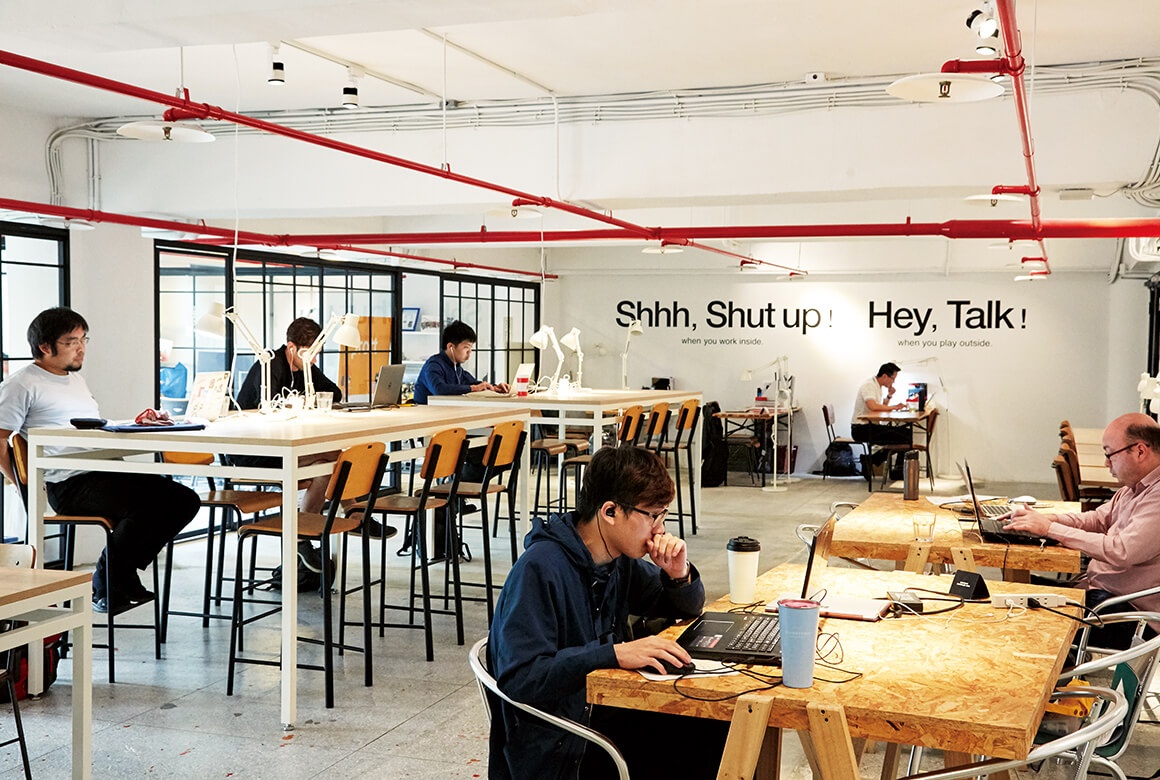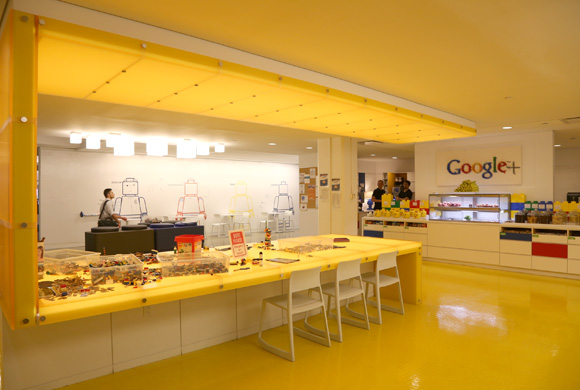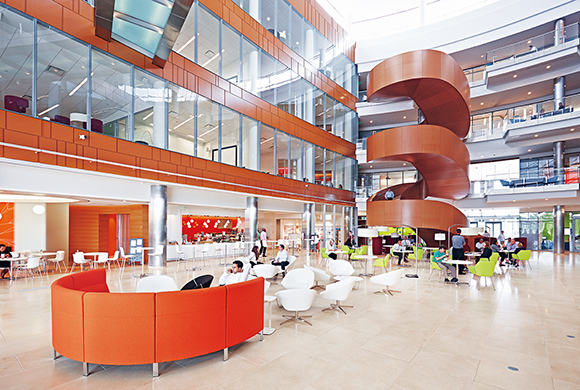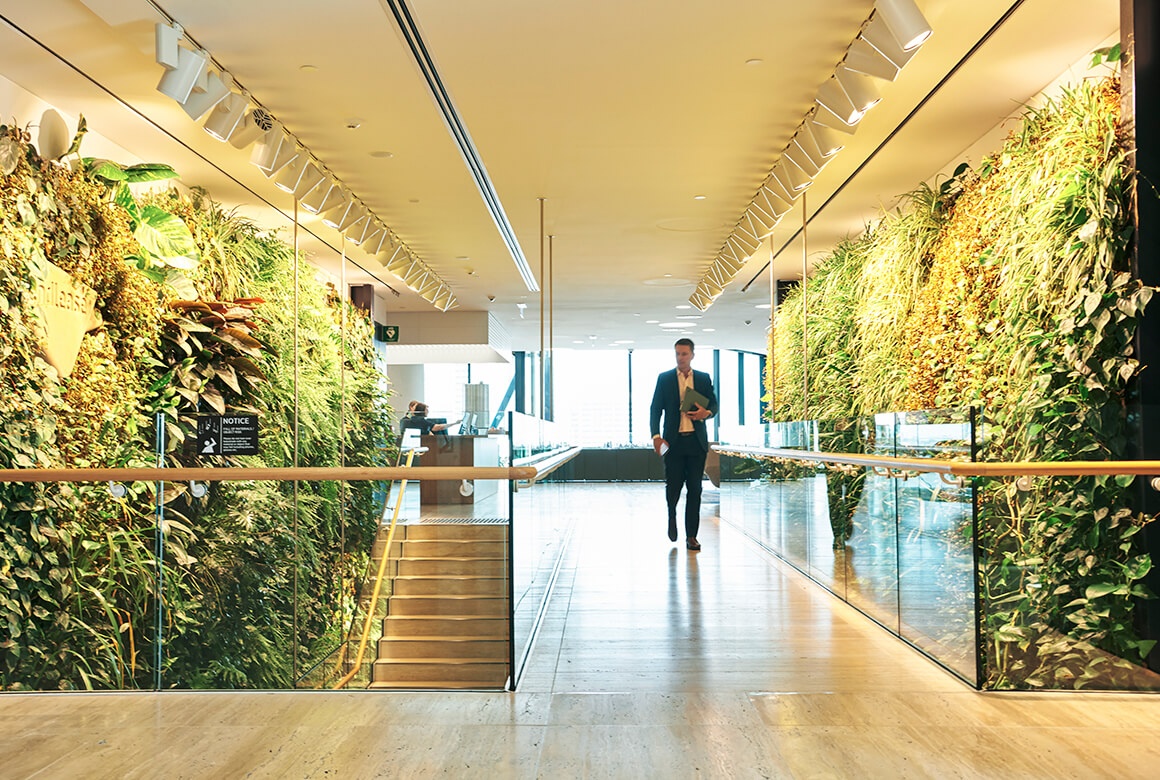Workplace
Apr. 22, 2013
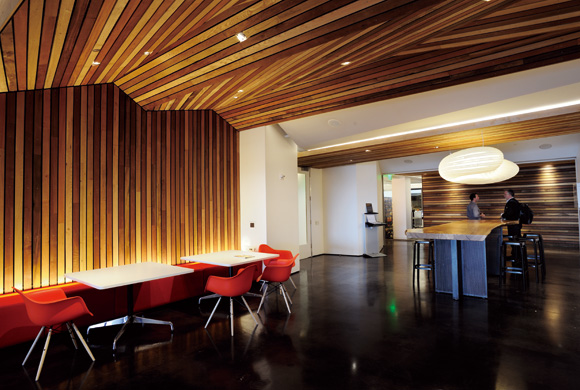
An Office Creating A New Paradigm
Software company Autodesk boasts the highest share in the engineering field
[AUTODESK] San Francisco, California, USA
Autodesk was founded in 1982 and became known as a company providing design software to manufacturing, architectural firms and public works. Its main product was AutoCAD, the leading product on the market, followed by an entry into the 3D CG software field. The company’s software is used today in many 3D CG applications in Hollywood movies, such as in “Avatar.”
Autodesk had become a major software manufacturer, but with the naming of Carl Bass as the new CEO in 2006, the compa ny’s business model was expanded from being a “design software maker” to become a “design solution company.” Providing welldesigned tools is important, but it’s easy to get in a rut if you are resigned to only that. The idea was to take one step up to find solutions for the business challenges faced by the customers of the company’s software.
Since then, the company has promoted change management by looking at this from all angles. One of these that directly influ enced the employees was the Office Project. “Previously, our offices had to fit a mold, so regardless of where a branch was around the world it would be the same, just like at an insurance company,” says Joseph Chen, Vice President, Corporate Real Estate and Facilities. This company, providing toplevel software throughout the world, and with a global network of 100 offices in 38 countries, had very similar offices around the world.
Symbolic of this was workspace zoning. In the case of the 2012 remodeling of the San Francisco office, there was a set percentage of 20 percent employee private space and 80 percent open space, this contrasted to some of Autodesk’s older facilities that were up to 90 percent private space. Employees sat at closed spaces surrounded by parti tions staring at their computers. Of course,or programming work that’s not necessarily a problem. However, for a company that describes itself as a design solution company, the output is a whole different thing. Where clients are coming to discuss complex business and design issues, the situation ques tioned the ability to mobilize collective wisdom.
“After the remodeling, 95 percent became open space, with five percent private em ployee space,” says Stephen Fukuhara, Senior Director, Facilities Ops and Projects. “This increased collaborative and meeting spaces, while we also added the remote communications and mobile work infrastruc ture to make it easier to exchange ideas with partners working in different areas. Employ ees can maintain their mobility, and they can keep an eye on the situation of needed collaboration. For example, by using video telephones for conference calls, body language is also transmitted, and mutual understanding becomes more accurate.
 Founded 1982
Founded 1982
Annual sales (2012): US$2.21 billion
Gross profits (2012): $1.98 billion
Employees: 7,500
The historic 1950s building housing the office. The interior construction relies on concrete beams, but because of the appearance they were masked in the renovation process.
 Joseph Chen / left
Joseph Chen / left
Vice President, Corporate Real
Estate and Facilities
Stephen Fukuhara / right
Senior Director, Facilities Ops
and Projects
The behavior of employees has also changed dramatically with the new office. It’s become normal for employees to have casual exchanges of ideas in the kitchen, and where meetings previously were on a confirmation basis, employees now much more aggressively propose their ideas.
The changes are also striking in the area of software development, traditionally the main business area. The needs for design soft ware have become more sophisticated, so rather than assuming the division of labor after fixing the final format, today the main method is for the members themselves to consider the format that makes for the most responsive development process. Engineers gather in the new office’s scrum room to sketch out diagrams and move tables around in order to formulate ideas.
When the decision was made for the new office, employees were surveyed, interviewed and gathered into focus groups to understand their workspace needs. The efficient working methods of the engineering team, sales team, and other groups, with feedback also provided.
“Space creates energy,” Mr. Chen says. “We considered the colors and materials that create a feeling of fun, and provide zones of creativity and energy for the employees.” As the company was chang ing its business model, a major turning point was in thinking about how indispensable it would be to have a higher level of con sciousness in reviewing the office strategy.
 The company encourages agile software development, with the scrum room home to countless ideas in progress. Sticky Labels were used to show ideas.
The company encourages agile software development, with the scrum room home to countless ideas in progress. Sticky Labels were used to show ideas.

The company’s new office was completed in San Francisco on May 2012 with a warm wooden interior. The building itself was built in the 1950s.
 360°View
360°ViewThe company’s new office was completed in San Francisco on May 2012 with a warm wooden interior. The building itself was built in the 1950s.
*Touch Picture for 360° View
Concretely speaking, there were two direc tions for changing the ways of thinking. The first, intended for employees, was thorough prior training and discussions, with warm support extended even after the actual office was completed. There were inevitably claims such as, “In many open spaces there is nothing blocking the light, so there are places that are too bright,” or, “When you’re in the phone booth, you can hear the voice of the person in the next booth.” The problem points were later followed up on.
Also, the office strategy announced by the company also included the important symbol represented by the gallery office. By establishing its office in San Francisco, Autodesk was creating a space where it could show what the company’s products can do, and where the products can actually be seen and touched. To help build understanding of the difficulttosee parts of software, it was seen as necessary to create a real place.
At the same time, it would be a space where employees could understand what business areas the company would be taking on and get a greater feeling for the vision. Many employees are proud to bring their families and friends with them into the Gallery.” Mr. Chen says “They don’t see computers running CAD software, rather they see the process of design and how design software enables the creation of everything around us including cars, bridges, skyscrapers, movies, and games.”
From WORKSIGHT 03(Nov.2012)
 Individual employee desks. There are approximately 170 desks in the new office, most occupied by product engineers. Office hours are not fixed, but are decided by the individual.
Individual employee desks. There are approximately 170 desks in the new office, most occupied by product engineers. Office hours are not fixed, but are decided by the individual.
 For times when concentration is needed, or for phoning outside, the Phone Booth private rooms are available. Ten of these have been created within the office.
For times when concentration is needed, or for phoning outside, the Phone Booth private rooms are available. Ten of these have been created within the office.






